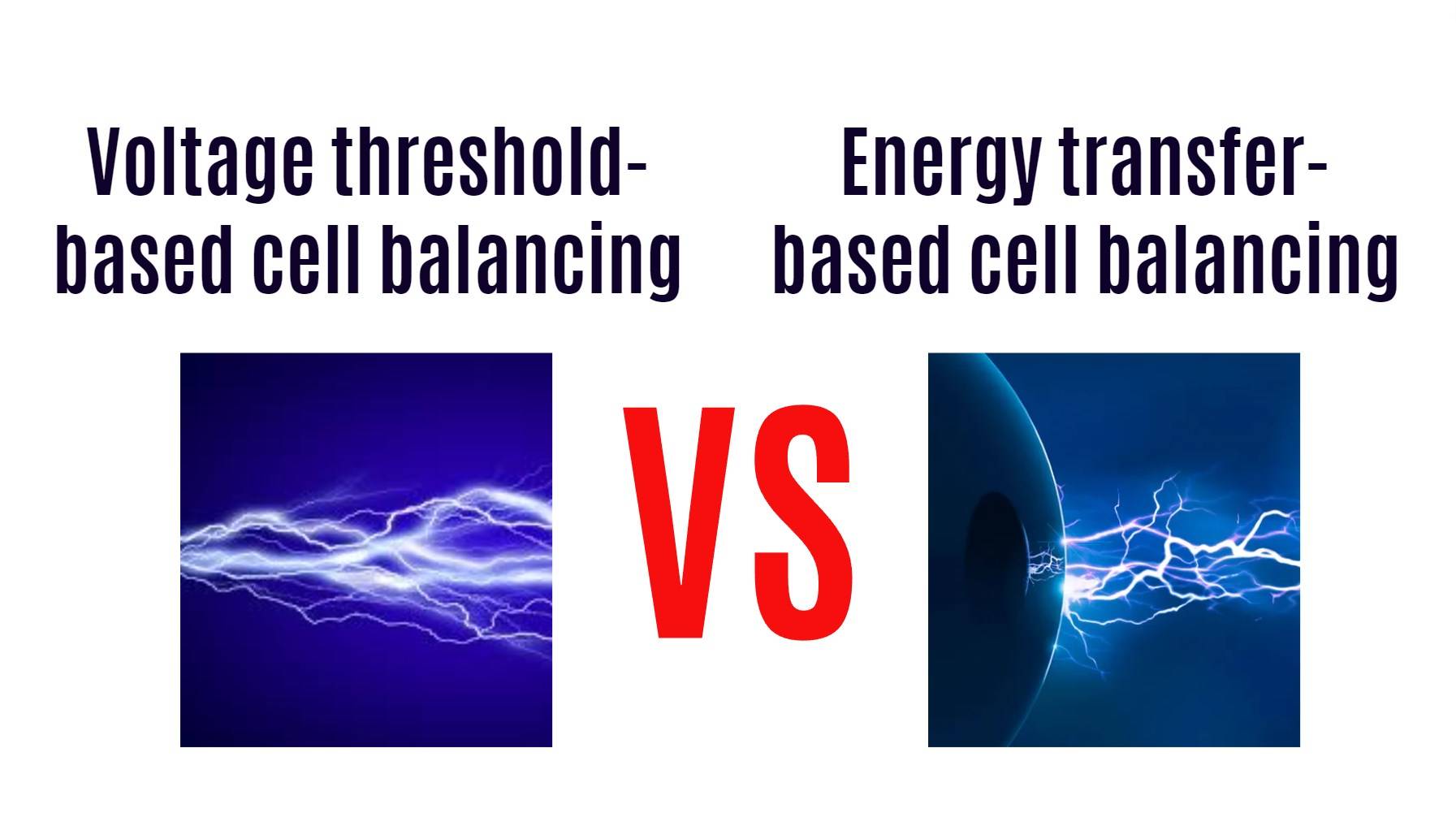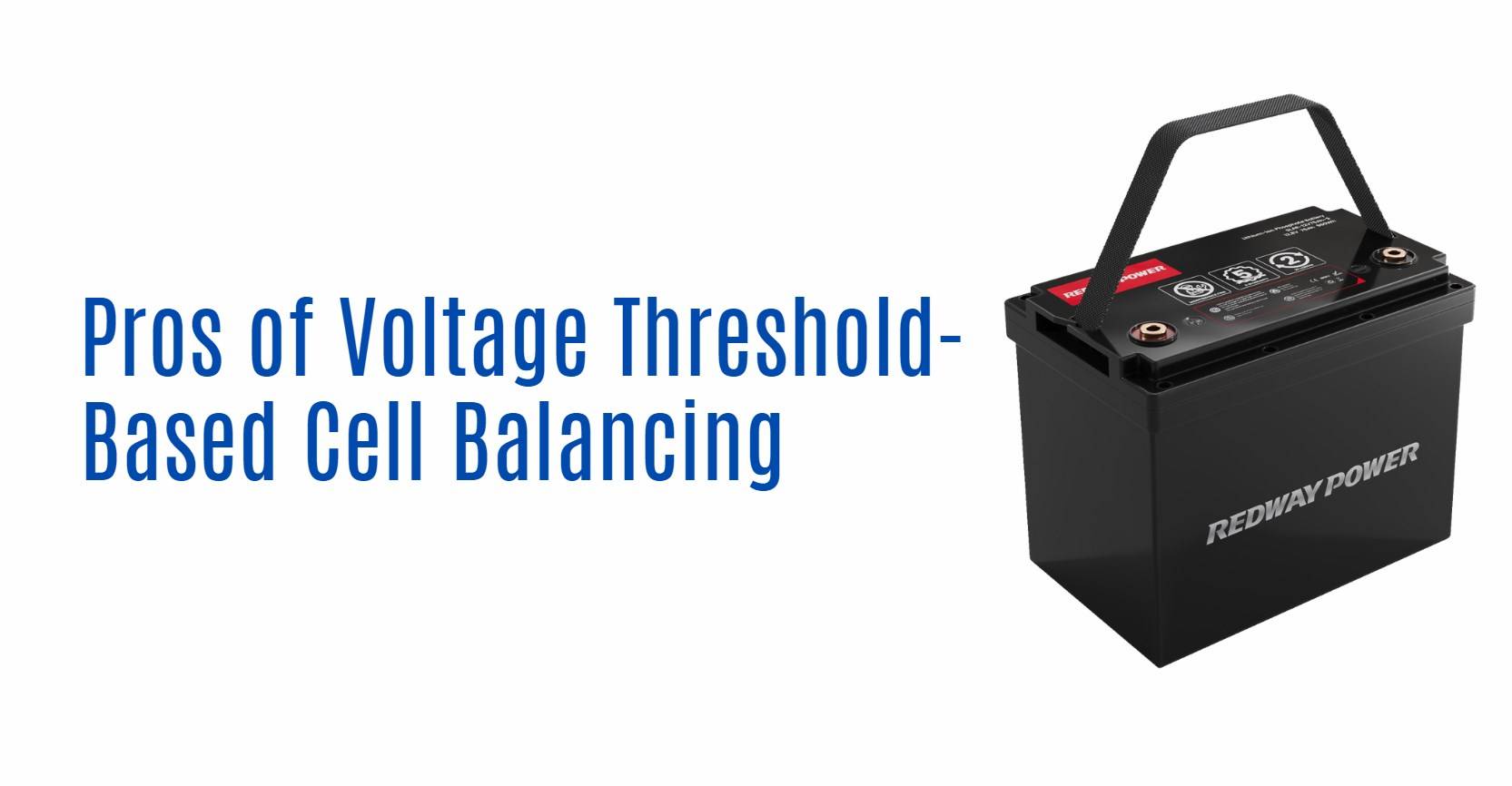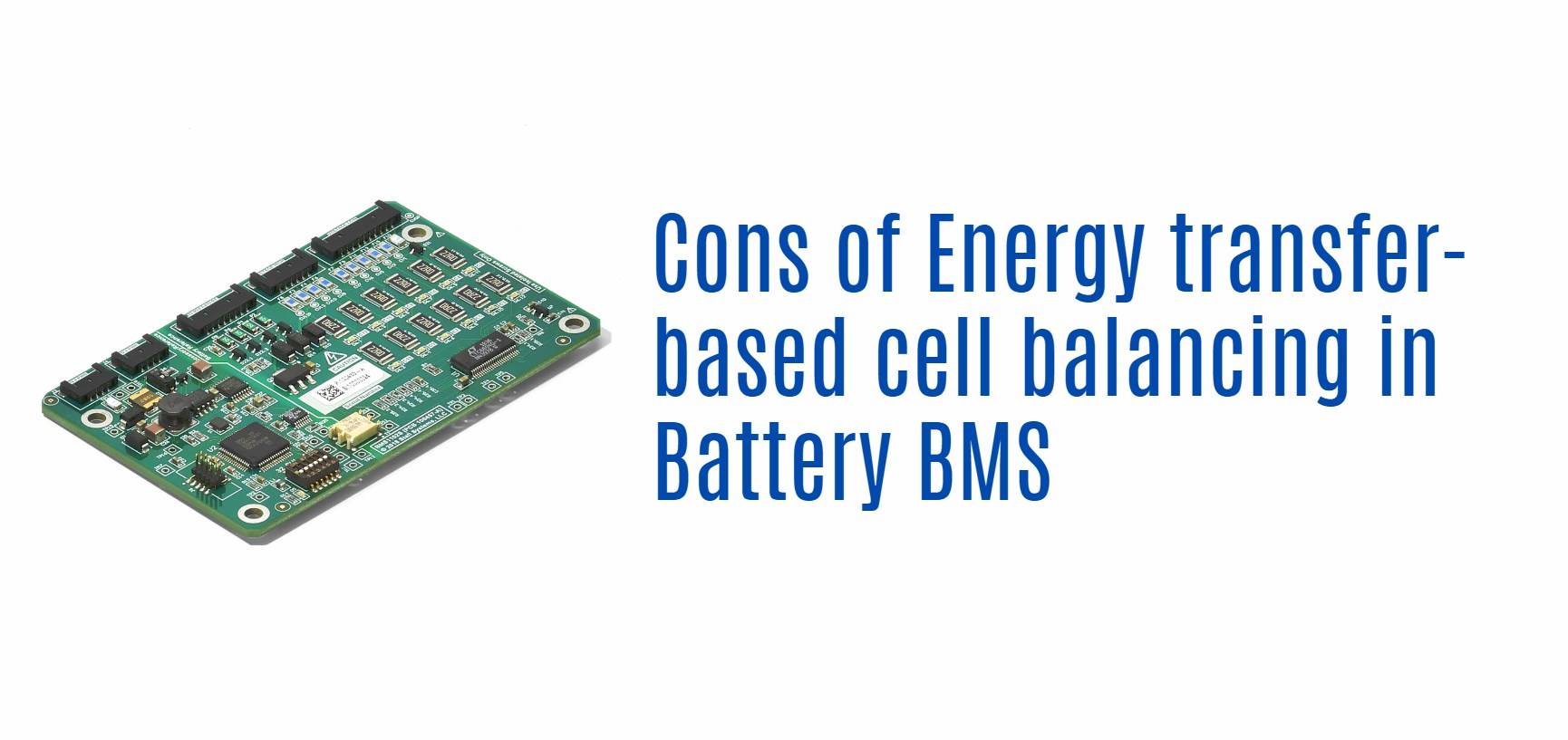Embark on a journey through the realm of Battery Management Systems (BMS) as we unravel the intricacies of cell balancing techniques. From Voltage Threshold-Based to Energy Transfer-Based methods, discover the science behind optimizing battery performance and longevity. Join us as we explore the wizardry that powers BMS technology and unlocks the potential of your batteries. Let’s dive into this illuminating discussion together!
What is Voltage Threshold-Based Cell Balancing in Battery BMS?
Voltage threshold-based cell balancing in Battery BMS involves balancing individual cells within a battery pack using voltage thresholds. By setting the termination voltage for each cell lower than the overall pack-based threshold divided by the number of cells, voltage differences are created to enable cell balancing. This method ensures that the cells operate within safe voltage limits and maximizes the performance and lifespan of the battery pack.
Voltage Threshold-Based Cell Balancing is a smart technique used in Battery Management Systems (BMS) to ensure that each cell within a battery pack operates efficiently. By constantly monitoring the voltage levels of individual cells, this method aims to equalize their charge states.
When one or more cells reach a predetermined voltage threshold, the BMS kicks into action. It initiates a balancing process by diverting excess energy from higher-voltage cells to lower-voltage ones. This helps maintain uniformity among all cells and prevents overcharging or undercharging.
In essence, Voltage Threshold-Based Cell Balancing acts as a vigilant guardian, ensuring that no cell in the battery pack is left behind or pushed beyond its limits. It plays a crucial role in optimizing battery performance and extending its overall lifespan.
How does Voltage Threshold-Based Cell Balancing Work?
Voltage threshold-based cell balancing operates by monitoring the voltages of individual cells within a battery pack. When certain cell voltages exceed predefined thresholds, balancing actions are triggered. Active balancing transfers charge from high-voltage cells to low-voltage cells, while passive balancing equalizes cell voltages using resistors. This method ensures that all cells remain within a desired voltage range, optimizing the performance and longevity of the battery pack.
Voltage Threshold-Based Cell Balancing is a common technique used in Battery Management Systems to ensure optimal performance and longevity of lithium-ion batteries. This method involves monitoring the voltage of each cell within the battery pack. When a cell reaches a predefined threshold voltage, the balancing circuitry activates to redistribute energy among cells.
By transferring excess charge from overcharged cells to undercharged ones, Voltage Threshold-Based Cell Balancing helps equalize the voltage levels across all cells, preventing capacity imbalances and prolonging the overall battery life. This process is crucial for maximizing energy storage capacity and maintaining consistent performance over time.
Voltage Threshold-Based Cell Balancing plays a vital role in enhancing battery efficiency and reliability by actively managing cell voltages to prevent undercharging or overcharging issues that can lead to premature degradation.
Pros of Voltage Threshold-Based Cell Balancing
Voltage threshold-based cell balancing offers several advantages. It ensures that all cells within a battery pack operate within a desired voltage range, optimizing their performance and lifespan. This method of cell balancing is cost-effective and efficient, making it a practical choice for battery management systems.
Voltage Threshold-Based Cell Balancing offers several advantages in Battery BMS technology. One of the main pros is its simplicity – by monitoring individual cell voltages and only activating balancing when needed, it efficiently equalizes cells without unnecessary energy consumption.
Another benefit is its effectiveness in prolonging battery life. By ensuring that all cells are at similar voltage levels, it helps prevent overcharging or discharging of specific cells, ultimately extending the overall lifespan of the battery pack.
Moreover, this method is cost-effective as it requires minimal additional components to implement within a BMS system. This makes it an attractive option for manufacturers looking to balance performance and affordability in their products.
Voltage Threshold-Based Cell Balancing provides a reliable and straightforward solution for maintaining cell health and optimizing the efficiency of battery systems.
Cons of Voltage Threshold-Based Cell Balancing
Voltage threshold-based cell balancing has some potential drawbacks. Algorithms that solely rely on voltage divergence as a balancing criterion may lead to overbalancing or underbalancing due to the hysteresis effect and variations in cell impedance. Additionally, achieving precise balancing between cells may be limited, especially when the voltage differences are small.
Voltage threshold-based cell balancing, while effective in some ways, has its limitations. One drawback is that it can lead to energy wastage as cells are balanced based on predetermined voltage thresholds. This approach may not always result in optimal balancing and can impact the overall efficiency of the battery management system.
Another downside is that voltage threshold-based cell balancing may not address underlying issues such as internal resistance variations among cells. This method relies solely on voltage levels without considering other important factors that could affect the performance and lifespan of the battery pack.
Moreover, this technique may be less flexible compared to energy transfer-based cell balancing. Voltage thresholds are fixed values, which means adjustments cannot be made dynamically based on real-time conditions or specific requirements of the battery cells.
In addition, voltage threshold-based cell balancing may require more complex circuitry and control algorithms to accurately monitor and balance each individual cell within a large battery pack. This complexity can increase costs and maintenance efforts associated with implementing this type of cell balancing strategy.
What is Energy transfer-based cell balancing in Battery BMS?
Energy transfer-based cell balancing in Battery BMS involves transferring energy from cells with higher voltage to cells with lower voltage. This technique helps equalize the voltage levels among the cells within the battery pack, promoting balance and optimal performance. By redistributing energy, energy transfer-based cell balancing helps maintain the integrity and efficiency of the battery system.
Energy transfer-based cell balancing in Battery BMS is a cutting-edge technology that focuses on redistributing energy between cells to ensure optimal performance and longevity. Unlike voltage threshold-based balancing, which relies on predefined voltage levels to initiate balancing actions, energy transfer-based balancing actively transfers excess energy from overcharged cells to undercharged ones within the battery pack.
By dynamically adjusting the energy distribution among cells, this method helps maintain uniformity in cell voltages and extends the overall lifespan of the battery. Energy transfer-based cell balancing operates efficiently by leveraging power electronics and control algorithms to regulate energy flow across cells in real-time.
One of the key advantages of this approach is its ability to address imbalances proactively, rather than waiting for predetermined thresholds to trigger corrective measures. Additionally, by actively managing energy transfer between cells, this technology can enhance overall battery efficiency and performance.
However, challenges such as increased complexity and cost may arise with implementing energy transfer-based cell balancing systems in Battery BMS. Nonetheless, ongoing advancements in this field hold promise for further optimizing battery management solutions.
How does Energy transfer-based cell balancing Work?
Energy transfer-based cell balancing is a technique used to equalize the voltage levels among cells within a battery pack. It involves transferring energy from cells with higher voltage to cells with lower voltage. By redistributing energy, this method helps maintain balance and optimal performance, maximizing the capacity and service life of the battery pack. Energy transfer-based cell balancing ensures that each cell operates within a desired voltage range, promoting efficiency and longevity.
Energy transfer-based cell balancing is a innovative method used in Battery Management Systems (BMS) to ensure optimal performance of lithium-ion batteries. This technique involves transferring energy from overcharged cells to undercharged ones, promoting uniform voltage levels across all cells within the battery pack.
By redistributing energy in this manner, energy transfer-based cell balancing helps extend the overall lifespan of the battery by preventing individual cells from becoming overworked or depleted prematurely. The process is automated and continuously monitors each cell’s state, adjusting the flow of energy as needed.
This dynamic approach to cell balancing offers more precise control and efficiency compared to traditional methods that rely solely on voltage thresholds. It enables better utilization of the battery capacity and enhances safety by reducing the risk of overcharging or overheating specific cells.
Energy transfer-based cell balancing represents a significant advancement in BMS technology, paving the way for greater performance and longevity in lithium-ion batteries.
Pros of Energy transfer-based cell balancing in Battery BMS
Energy transfer-based cell balancing in Battery BMS offers several advantages. It maximizes the usable capacity of the battery pack, prolongs the life of the cells, and enhances safety by preventing overcharging or over-discharging. By equalizing the state of charge among cells, energy transfer-based cell balancing ensures optimal performance, longevity, and safety of the battery system.
Energy transfer-based cell balancing in Battery BMS offers several advantages that make it a promising technology in the field of battery management systems. One key benefit is its ability to efficiently redistribute energy between cells, ensuring optimal performance and longevity. This method allows for precise control over each cell’s state of charge, enhancing overall battery health.
Another advantage is the potential for faster balancing times compared to voltage threshold-based methods. By actively transferring energy between cells, this approach can address imbalance issues more quickly, leading to improved efficiency and reduced downtime. Additionally, energy transfer-based cell balancing can help maximize usable capacity within the battery pack, optimizing its overall functionality.
Moreover, this technique has shown promise in extending the lifespan of batteries by preventing overcharging or overdischarging of individual cells. By maintaining balance across all cells through controlled energy transfers, the risk of premature degradation is minimized. Energy transfer-based cell balancing presents a compelling solution for enhancing battery performance and reliability in various applications.
Cons of Energy transfer-based cell balancing in Battery BMS
Energy transfer-based cell balancing in Battery BMS has some potential drawbacks. It may have limitations in thermal management and does not actively balance cells at full State of Charge (SoC). This technique typically focuses on balancing the top 95% of each cell, potentially leaving a portion of the cell capacity unbalanced. Additionally, energy transfer-based cell balancing involves energy loss, leading to low transmission efficiency.
Energy transfer-based cell balancing in Battery BMS has its drawbacks. One of the main concerns is the potential for efficiency loss during energy transfer processes. This can result in wasted energy and reduced overall performance of the battery system. Additionally, energy transfer-based balancing systems may be more complex to implement and maintain compared to voltage threshold-based methods.
Another disadvantage is the risk of heat generation during energy transfers, which could lead to thermal management issues within the battery pack. This increased heat production can impact the longevity and safety of the cells over time. Moreover, energy transfer-based balancing solutions may require additional components or hardware, adding complexity and cost to the overall system.
Furthermore, these systems might have limitations when it comes to handling large variances in cell voltages efficiently. This could potentially lead to imbalanced cells if not properly managed. Considering these factors is crucial when evaluating the suitability of energy transfer-based cell balancing for specific applications within Battery BMS technology.
Voltage threshold-based cell balancing vs. Energy transfer-based cell balancing in details
Voltage threshold-based cell balancing and energy transfer-based cell balancing are two widely used methods in Battery BMS. Voltage threshold-based cell balancing monitors cell voltages and initiates balancing actions based on predefined thresholds. Energy transfer-based cell balancing involves transferring energy from cells with higher voltage to cells with lower voltage to equalize voltage levels. While voltage threshold-based cell balancing may face challenges related to overbalancing or underbalancing, energy transfer-based cell balancing helps maintain voltage balance among cells, optimizing battery performance and lifespan.
When it comes to Battery Management Systems (BMS), the debate between voltage threshold-based cell balancing and energy transfer-based cell balancing is ongoing.
Voltage threshold-based cell balancing focuses on maintaining individual cell voltages within a specific range to ensure optimal performance and longevity of the battery pack. On the other hand, energy transfer-based cell balancing redistributes charge among cells to equalize their state of charge.
Both methods have their advantages and limitations. Voltage threshold-based balancing is simple and cost-effective but may not always achieve perfect balance. Energy transfer-based balancing can provide precise control but requires additional components and complexity.
The choice between these two approaches depends on factors like cost, efficiency, and desired level of balance accuracy in a BMS system. As technology advances, we can expect further innovations in BMS cell balancing techniques for improved battery performance and reliability.
Future developments in BMS cell balancing technology
The future of BMS cell balancing technology is driven by advancements in active balancing techniques, improved energy efficiency, and the integration of smart algorithms. Active balancing techniques will become more sophisticated, ensuring precise and efficient cell balancing. Energy efficiency will be enhanced to minimize energy losses during the balancing process. The integration of smart algorithms will enable more precise and effective cell balancing, optimizing battery performance and extending lifespan.
Future developments in BMS cell balancing technology hold promise for even more efficient and advanced battery management systems. As technology continues to evolve, we can expect to see enhancements in both voltage threshold-based and energy transfer-based cell balancing methods.
In the coming years, innovations may focus on improving balancing accuracy, increasing speed, reducing energy losses during the balancing process, and enhancing overall system reliability. Integrating artificial intelligence and machine learning algorithms could further optimize cell balancing strategies based on real-time data analysis.
The future of BMS cell balancing technology looks bright as researchers and engineers continue to push boundaries and explore new possibilities for maximizing the performance and longevity of battery systems in various applications. Stay tuned for exciting advancements in this critical aspect of battery management!




























